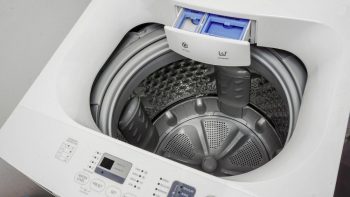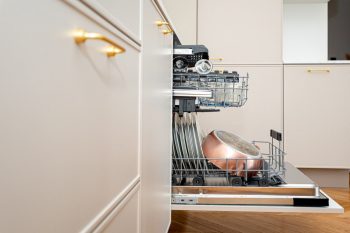
A sagging refrigerator door is not just an eyesore; it can also lead to increased energy consumption and reduced efficiency of your appliance. The good news is that you can fix this issue yourself with a few simple tools and steps. In this comprehensive guide, we will walk you through the steps to fix a sagging refrigerator door, including identifying the problem, gathering the necessary tools, and executing the repair process.
To fix a sagging refrigerator door, first identify the problem, which could be due to misaligned hinges or a worn-out door gasket. Gather the necessary tools such as a level, screwdrivers, and a socket/ratchet set. Check the levelness of the refrigerator, inspect and adjust the door hinges, check the door seal, and test the door. If the door is still sagging, you may need to adjust the door slightly above level or consider calling a professional.
Identifying a Sagging Refrigerator Door
Before you can fix the problem, you need to identify it. Some common signs that your refrigerator door is sagging include:
- Uneven space between the refrigerator and freezer door
- The door not being flush with the rest of the refrigerator
- Poor door gasket seal
- Frost buildup in the freezer
- Cool air escaping from around the edges of the door
If you notice any of these signs, it’s time to address the issue.
Reasons for a Sagging Refrigerator Door
Several factors can cause a refrigerator door to sag. These include:
- Excessive weight on the door
- Misaligned hinges
- An uneven fridge or floor
- Worn-out hinge washer
- Damaged or worn-out door gasket
Understanding the root cause of the problem can help you address it effectively.
Necessary Tools and Materials
To fix a sagging refrigerator door, you will need the following tools and materials:
- A 4-foot level
- Phillips-head screwdriver
- Flat-head screwdriver
- Nut driver
- Socket/ratchet set
Step-by-Step Guide to Fixing a Sagging Refrigerator Door
Here are the steps to fix a sagging refrigerator door:
- Check the levelness of the refrigerator: Using the 4-foot level, make sure your refrigerator is level. If it isn’t, adjust the feet of the refrigerator.
- Inspect the door hinges: Check if the hinges are loose or misaligned. If they are, you will need to adjust them.
- Adjust the top hinge: Use the flat-head screwdriver to pry off the hinge cap. Then, using the socket/ratchet set, loosen the hinge screws. Lift the door and align it with the top of the refrigerator. Once aligned, tighten the hinge screws to secure the door in its new position.
- Adjust the middle hinge (if necessary): If the lower door is sagging, you will need to adjust the middle hinge. However, keep in mind that adjusting the middle hinge can affect the upper door, so you may need to adjust the top hinge afterward.
- Check the door seal: Ensure that the door seal is clean and in good condition. If it’s damaged, you may need to replace it.
- Test the door: Open and close the door to ensure it is sealing correctly. If the door is still sagging, you may need to adjust the door slightly above level so that it sinks into the correct position when it’s loaded with food.
If these steps don’t resolve the issue, you may need to replace the door hinges or consult a professional.
When to Call a Professional
If you’ve tried the steps outlined above and your refrigerator door is still sagging, it’s time to call a professional. A professional can identify and fix complex issues, such as damaged components or a deeper mechanical problem, that may be causing the door to sag.
Conclusion
Fixing a sagging refrigerator door can be a quick and straightforward DIY project if you have the right tools and follow the correct steps. However, if the problem persists after your attempt to fix it, don’t hesitate to call a professional. With this guide in hand, you are well-equipped to address this common refrigerator issue and ensure your appliance is functioning efficiently.
Frequently Asked Questions
What is a door gasket and where can I find it on my refrigerator?
A door gasket is a type of seal that goes around the edge of the refrigerator door. It helps to keep the cold air inside and the warm air out. You can find it by looking at the edge of your refrigerator door where it meets the body of the refrigerator.
How can I tell if my refrigerator door gasket is damaged?
A damaged refrigerator door gasket may have cracks, tears, or appear worn out. Another sign of a damaged gasket is if you feel cold air escaping from around the edges of the door when it’s closed.
How can I prevent my refrigerator door from sagging in the future?
To prevent your refrigerator door from sagging, avoid hanging heavy items on the door, make sure the refrigerator is always level, and regularly inspect and maintain the door hinges and gasket.
What type of professional should I call if my refrigerator door is still sagging after following these steps?
If your refrigerator door is still sagging, it’s best to call a professional appliance repair service. They have the skills and experience to diagnose and fix a wide range of appliance issues.
What is the risk of not fixing a sagging refrigerator door?
Not fixing a sagging refrigerator door can lead to higher energy consumption, as the refrigerator has to work harder to maintain the correct temperature. It can also lead to food spoilage due to inconsistent temperatures, and in severe cases, it could even cause the door to fall off.












